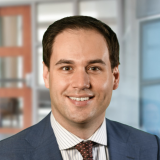In the modern era, one of the most widespread — and most incorrect — societal notions is that age signifies decreased cognitive ability. While the two have some association, their common linkage also betrays misunderstanding and ageist bias. Often considered one of the last socially accepted prejudices, ageism involves the stereotypes, preconceptions, and discrimination we hold and show to others about age. Failure to consciously address this bias can lead to misdiagnosis and failure to diagnose comorbidities.
Ageism is experienced throughout our lives. When we are young, our opinions or ideas are not as easily accepted as the opinions of more experienced, mature people. Older children who are physically small are often infantilized, while younger yet larger children’s skills and experience are often overestimated. As we age, we are expected to become overly concerned about our physical condition, out of touch, forgetful, depressed, and dependent.
Ageism also crops up in the medical field. Alzheimer’s disease was originally described as “presenile dementia” when the eponymous psychiatrist encountered a 50-year-old woman with unexpected cognitive deterioration. As late as 1970, medicine still considered senility (dementia) as natural and normal, and believed that it was only notable when it occurred prior to age 65, sooner than expected. Only later did we realize that while common brain changes are associated with aging, dementia is not normal and should be investigated as a diagnosis at any age.
Physiological differences in brain ability occur throughout normal development and the human lifespan. Our brains do not fully myelinate until ages 21-25. White matter peaks between 34-45 years, and regions associated with cognition and emotion develop after the sensory and motor areas do. Certain things do decline throughout adulthood, like simple cognitive processing and the amount of time we can hold data in our working memory. Fixed (or crystalized) knowledge, though, currently remains intact until around 80 years of age, though our ability to recall the source of information begins to decline much earlier. This means there is insufficient justification for applying the ageism bias to both ends of our lifespan, wherein it’s believed that neither the young nor the old should be expected to have intact cognition.
Ageism highlights our use of the representative bias, a common heuristic that all people routinely employ, including physicians as we attempt to solve clinical problems. It leads us to estimate, not calculate, probability based on stereotypes. We might be surprised, for example, that a well-dressed patient is a long-haul truck driver, or shocked that a person of a specific culture or race holds a particular degree or job. With the representative bias we see what we expect to see. Similarly, generational stereotyping and use of memes — e.g., “OK Boomer” for older adults; “Slacker” for Gen X; or “lazy” for Gen Z — affect people of all ages, influencing their behavior and self-image.
Unchecked, ageism can easily lead us to make our own cognitive errors. As we evaluate patients, we too often immediately place them into categories that engender assumptions about their abilities, rather than carefully examining them as individuals. In fact, ageism can also distort patients’ performance through mechanisms such as self-stereotyping, as well as interpretations of cognitive testing. With encouragement and an open mind about results, common bedside or office tools should be utilized to objectively, rather than subjectively, assess a patient’s mental acuity and memory. The Mini-Mental Status Examination and elements of the standard Mental Status Examination, including word recall, digit repetition, and serial subtractions, are useful instruments. Clinicians must remember to ask only questions they can verify the answers to: who knows what the patient actually had for breakfast, or what the name of their elementary school or first grade teacher was? Asking the name of our current president is not as helpful as asking who the last three were, in order. We must each adopt a standard, verified, and efficient method, routinely applying it to fight against our bias.
Unless addressed, ageism leads to over- and under-treatment. The financial costs of ageism to the U.S. health system have been calculated at over $63M each year when considering only the eight most costly health conditions treated in older patients. This bias has resulted in over 17 million additional cases of these health conditions: cardiovascular and chronic respiratory disease, musculoskeletal disorders, injuries, diabetes mellitus, smoking cessation treatments, mental health disorders, and non-communicable diseases. This excess has been determined empirically, but one example is that older patients exposed to negative age stereotypes exhibit increased cardiovascular stress and events. The prevalence and risks of ageism were particularly on display during the recent COVID-19 pandemic, as older patients, at the greatest risk, were too often abandoned in care facilities or triaged out of intervention.
We know that, over long periods of time, those born more recently have fewer health problems than those born even a few years earlier, about 1% for each difference in birth year. We might expect, then, that aging cohorts will be progressively associated with fewer cognitive and other medical problems. In fact, the metacognitive skills we should be employing as effective problem-solving clinicians do not appear to deteriorate with age.
We are cognitive-based professionals. Allowing ageism to go unnoticed and unchallenged leads to internalization of this bias, and ultimately affects our view of ourselves, our outlook, our own cognitive performance, and our life expectancy. We have a duty to our patients, as well as ourselves, to identify this too easily accepted prejudice and consciously act to oppose it in our own work and lives, evaluating each patient and their abilities as an individual and not only as a member of a group.
How do you oppose ageism in your day-to-day? Share strategies in the comments.
Dr. Putman is the author of Rational Psychopharmacology: A Book of Clinical Skills and Encountering Treatment Resistance: Solutions Through Reconceptualization. He blogs at drpaulputman.com. Dr. Putman is a 2024–2025 Doximity Op-Med Fellow.
Image by Basius77 / Shutterstock







